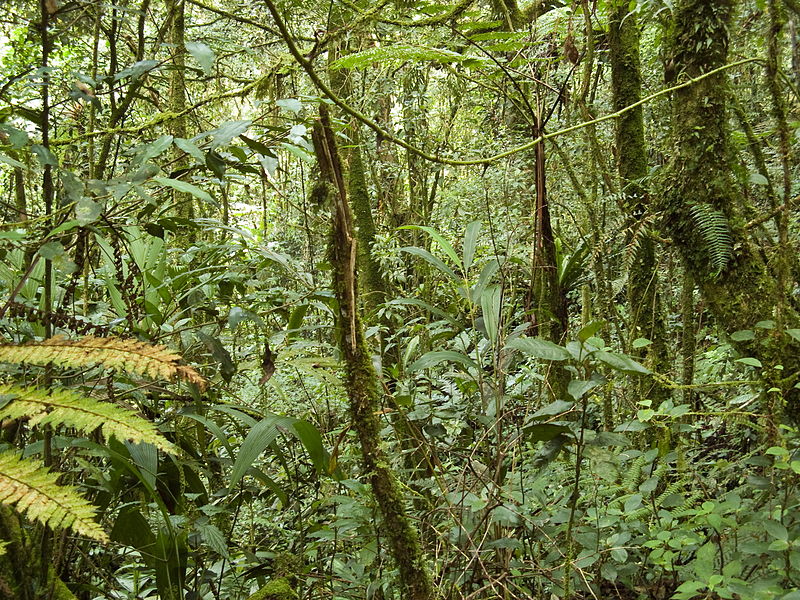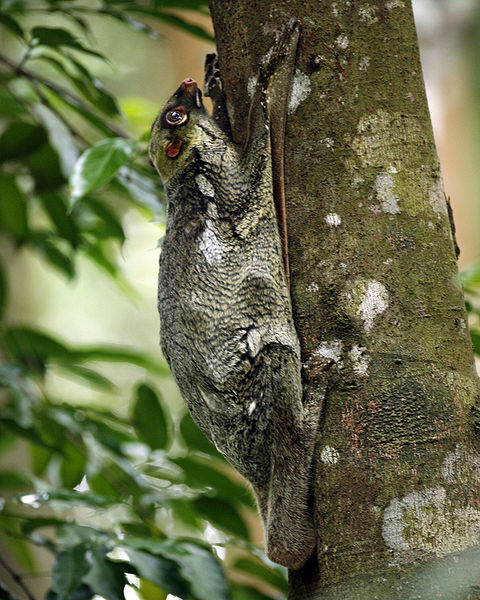Habitat
The Galeopterus variegatus, more commonly referred to as the Sunda colugo, is one of the two living species of the order Dermoptera. Research on the Sunda colugo has been very limited due to the rareness of the species as well as other factors such as appearance, vocalization, and activity (Lim et al., 2013). In order to protect themselves from predators the Galeopterus variegatus is camouflaged to match the trees that they live in.
Figure 1. Sunda Colugo camouflaged on a tree.
The few studies conducted have concluded that the Sunda colugo is found solely in Southeast Asia (Lim et al., 2013). Java, southern Burma, Singapore, Sumatra, Thailand, southern Vietnam, Malay Penisula, Borneo, Laos, Bali, and the southern Philippines are the areas with recorded sightings (Nasir and Abdullah, 2010). Galeopterus variegatus are arboreal folivores. This means that they are herbivores (plant-eating organisms) that specialize in eating leaves. Arboreal folivores have special adaptations that allow them to digest leaves more efficiently than other organisms, and they often have mutualistic relationships with symbiotic bacteria to aid with digestion.
It is crucial that the Galeopterus variegatus live in areas with sufficient tree covering because their diet consists of leaves, flowers, fruit, and sap (Nasir and Abdullah, 2010). Previous studies identified secondary forests, gardens, mountainous areas, plantations (rubber and coconut), lowland forests, upland forests, and tropical forests as living environments for this organism (Nasir and Abdullah, 2010). However, more recent studies provide evidence that the primary habitat for the Galeopterus variegatus is tropical forests (Lim et al., 2013). Galeopterus variegatus need a significant amount of canopy covering to cater to their feeding habits, which is why they are rarely found in open spaces such as gardens and plantations. The more canopy cover in a region, the more colugos in that area. Other organisms that live in the same habitat includes but is not limited to: rhesus monkey, house shrew, singapore rat, lesser mousedeer, malayan civet, leopard, Annandale’s rat, plantain squirrel, malayan slit-faced bat (also known as the Southeast Asian hollow-faced bat,) changeable hawk-eagle, and humans (Nasir and Abdullah, 2010). Humans are a threat to the Galeopterus variegatus because they hunt them for their fur in order to produce hats.
Head on over to adaptations to learn about what makes this Colugo so unique!

